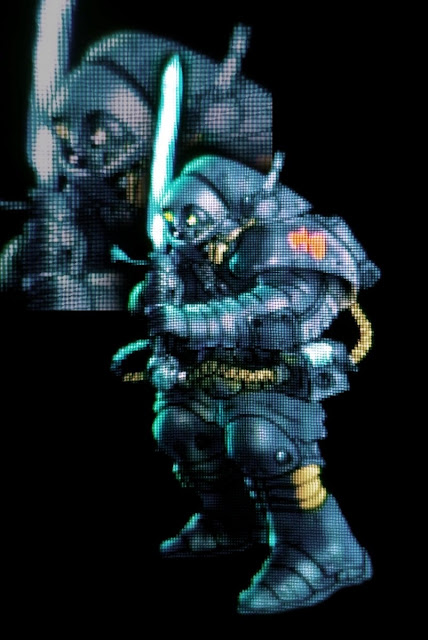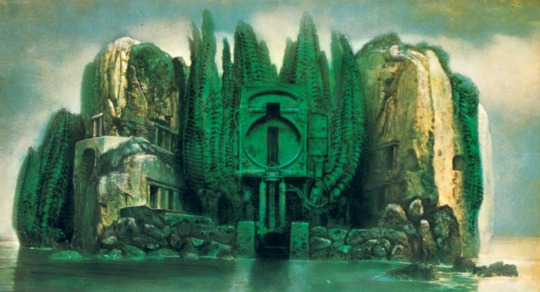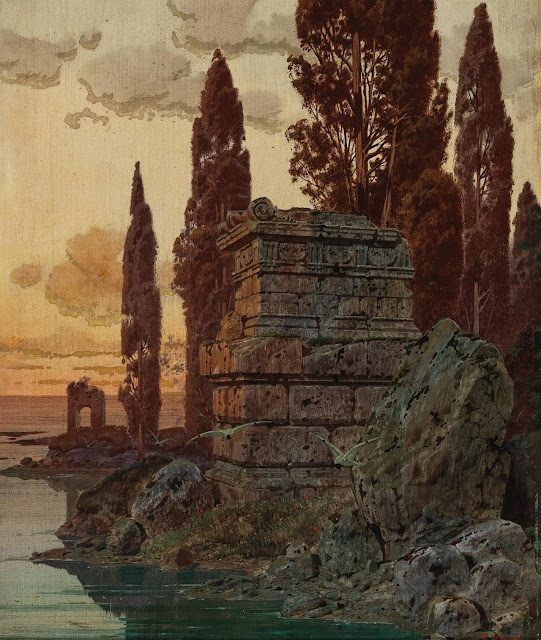continuing
Brownie
Oh no, this picture. Okay so they're like miniature, somewhat more primitive hobbits with basic illusory magic. These are the fairies that can repair anything with their magic tools. Sometimes they act as fairy-tale house elves for some reason.
Well, if we're going the fairy-folk route, the first thing that needs to happen is they need to be unpredictable and strange. I like fairy stuff when they force you to play by bizarre and arbitrary rules, like, oh I can help you, but first you have to, like, walk counter-clockwise around the hill seven times. That's from a story I read growing up about a girl who gets kidnapped by the goblin king because she accidentally threw her ball into the fairy-world somehow.
But brownies? I'm imagining weird little guys who follow around elves in the woods, they have faces that change shape arbitrarily. I always have the impression that brownies specifically are made from wood, bark, and moss, though I'm not sure what to do with that.
I like the idea maybe of brownies that have sort of enslaved random villagers out in the wilderness. They show up offering to fix their stuff, but the more stuff they fix, the more stuff breaks. Then after a while the house is full of brownies, like a party where too many people show up, and then they start getting violent, in a teasing playful kind of way, until eventually the victims find themselves doing the slave work. And the brownies won't leave.
For the kilmoulis, they're just smaller versions of brownies. I don't mind there being different sizes and versions of brownies. These ones are specifically rat-like, sounds like they steal food. Maybe they have a similar disposition, they beg for food, but if you feed them, more and more show up, and when you refuse, they eat you.
Bugbear
Don't think I've done a bugbear either. "Giant, hairy cousins of goblins . . . bugbears are large and very muscular, standing 7' tall." My players would try to fuck them probably. So they are bestial in appearance, bear-like, with a strong sense of smell. The Monster Manual specifies that they live in caves, which I reject.
Not sure what to do with this. I'm not generally very interested in humanoid tribalist monsters, they're boring and played out, and there's not much to differentiate these guys. I don't even like the picture, he actually looks very proper and noble, like a knight that's been transformed.
Well, I definitely can't imagine more than two bugbears. God, even the name is bad.
I can imagine some far off lord employing these guys. Maybe there's just one. He doesn't need to justify his appearance, he came out of the wilderness, he knows how to fight. He's some kind of goblin, I don't know. His eyes are reflective in the dark, he smells too well . . . it's kind of shading over into wolf-man, to be honest.
The best I can imagine is maybe having a couple of these guys as background characters at a monster keep. If all the inhabitants are a different kind of goblin, skeleton, vampire, fairy-creature, or whatever, having a couple bugbears drinking at a table in the great hall seems natural. Like a one-off alien in Star Wars.
Bulette
I did a bulette once in high school and regretted it, the idea seemed so cool when I was 15 but as soon as he came out and started fighting I realized how lame he actually was. A shark with legs that burrows? The monster manual even specifies that his name is pronounced "Boo-lay" which makes it even more laughable. It's French? Come on.
Breath of the Wild did a good version in the desert, what was it, tortuga or something? Molduga. That one however is finned and swims through sand, which is much more palatable. The bulette specifically tunnels through dirt somehow. Honestly, I'm not even a fan of regular sharks. What's scary to me about sharks is that they're just passively out there in the water and you can't really see them, and they're much more mobile than you -- you're in their environment, you're the intruder, and they have the advantage.
Now I read a bunch of shark attack accounts and I'm creeped out but now closer to figuring out how to translate that to a landshark. I just doesn't work. Moving on!
Bullywug
Ah, frog-men. Frog-men are great when they worship alien outer gods and have utterly terrifying, alien, implacable expressions as they kill you. I've done slaad and frog-demons but I'm not sure I've done frog-men, and if so, I've missed out.
Cat, great
Big cats. I'm a little tired of the claw/claw/bite of great cats. But each great cat is interesting and charismatic in different ways so I'll try to go through them.
Cheetah
Apparently they are actually quite small. Now, it's hard to imagine a place where a cheetah would exist in my world. Lanky, family oriented, warm. I can actually imagine a cheetah-man, a pleasant, warm-blooded guy, lean and harsh, very far from home.
Jaguar
Pretty sure I've done these. Jaguars are so magical, it's easy to imagine them talking.
Leopard
done
Lion
Lions are lame. The only suitable lion I can imagine is an old, dusty, lion pelt... even that kind of diminishes the world somehow. Aslan kind of killed lions. I do like the idea of rogue lions, I've heard some very scary stories out of India. The lion is the land version of the shark, for sure. Maybe a lion that's doing something entirely unnatural, it slithers, or burrows, or walks on its hind legs even though it's still a cat. A lion that's learned to do something it's not supposed to, I kind of like that idea.
Mountain lion
These are fine. I'm okay with regular mountain lions existing in the mountains.
Spotted lion
Did they really have to include this? Moving on.
Giant lynx
"Prefers cold coniferous and scrub forest . . . the giant lynx never attacks men . . . they can communicate in their own language with others of its kind." What were they on to here? Anyway, this reminds me a little bit of the giant stork. I'm okay with a giant lynx moving through the cold, foggy, snow-laden coniferous forest, distant as a spirit. It will not be speaking and I imagine it's intelligent enough to know now to attack adventurers. I'm okay with this.
Tiger
Yes, I did blue dream tigers at one point. Okay.
Smilodon
It just seems over the top. Do tigers REALLY need giant fangs to be even more threatening? They just look goofy. If they players even traveled back in time, it wouldn't be sabre-toothed tigers, it would be proto-demons and primordial dragons and shit. Sabre-toothed tigers are too reminiscent of cave-men, and I prefer imagining early humans as more or less like us, but in savage and early Conan-like civilizations, with wars that lasted millennia, building forgotten cities on top of the the ruins of even earlier forgotten cities. As soon as a sabre-tooth tiger shows up, all the cliches are crowding behind it -- animal skins, fires, caves, cave drawings, etc, and for what? A +2 to attack and damage?
Part of the appeal of the sabre tooth tiger is the implication that tigers used to be even worse. This is already undercut in a game of dungeons and dragons by the existence of, like, dragons.
However, if the players did happen to travel deep into dusty badlands, fought past the legions of flightless birds etc. and came upon a savage warrior queen who happened to have a couple sabre-tooth tigers, maybe that would be okay.
Cat, small
I've put so many cats in my game.
Domestic? Check. Wild? Check. Elven...?
Yeah, no. Cats are already elf-like, adding "elven" on top is just killing it. The elf cats speak elven, are slightly psychic, can cast enlarge and trip, etc ... I don't know man. I'm okay with a cat having like a 2% chance of responding if you talk to it, that starts tipping the game into haruki murakami but that's okay. But I can't wrap my head around an elf cat legitimately existing. I'm gonna pass.
Catoblepas
Never done these. Monstrously ugly monsters that shoot death rays out of their eyes.
Maybe it's just so ugly that looking at it kills you. I like the detail that it seeks out fresh meat under the full moon. It probably goes into lonely old couples' houses, reveals itself, and then eats them, and makes their house its lair. It gets overgrown by the swamp and the catoblepas trambles everything down like a stupid but malicious animal. I'm okay with this.
Cave fisher
I do kind of like the idea of a crunchy exo-skeletal spider-crab perched in a crevice dangling a long silvery thread down, and when you touch it, you're anchored to it inexorably. It would have to be something that's mechanically really overwhelming, so it feels like you're really trapped. I like very obvious traps that are horribly punishing if you decide against your better judgment to interact with it -- this could be like that. You're pulled upwards and at the top you see the giant bug that's about to eat you, with black glittery eyes, too many claws, fibrous hairs sticking off, it pulls you into its crevice... Sure I'm down.
I also like that they're a predator animal, so there could be, like, a lot of them. You wander into some ruins deep under ground and there are these threads dangling everywhere. I like it when bug wildlife is just too profuse, it's disgusting. So this could play off that also.
Centar
Never done a centaur. They're just too fuckable. Hot, sexy, hairy centaur men with giant horse dicks? On the other end of the spectrum, they're just kind of twee and whimsical, just really magical guys that live, like, in the forest? I'm going to have to think about this. I'll pick it up next time.



















